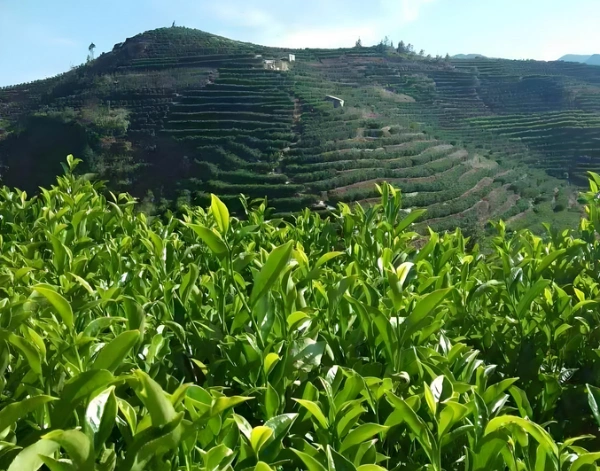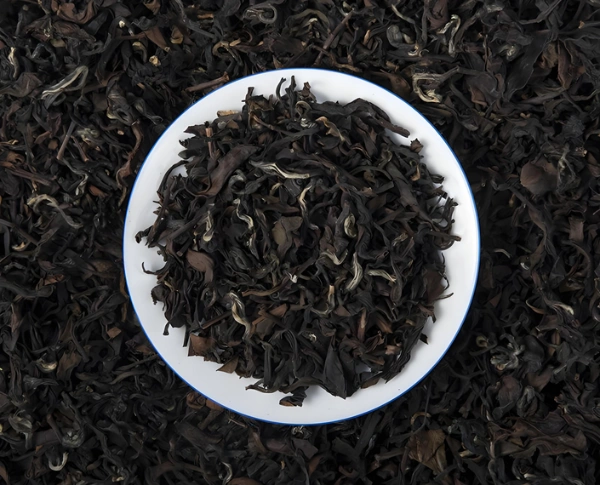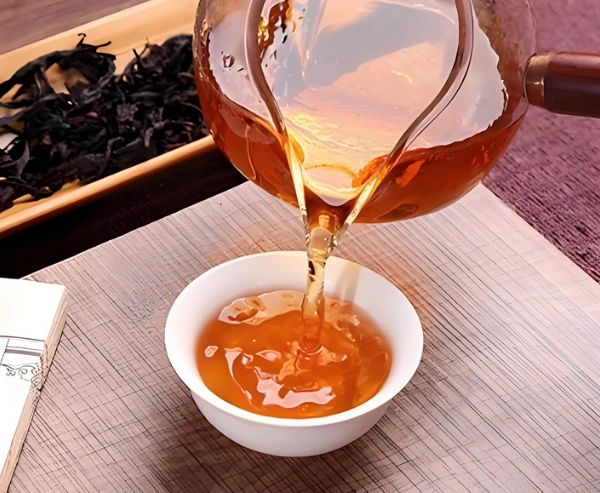High mountain oolong tea transports you to mist-shrouded peaks with every fragrant cup. Picture yourself atop Alishan at dawn: cool air carries floral perfume, while tender leaves unfurl in steaming water, releasing creamy honey notes and a whisper of cool mineral air.
This is the magic of high mountain oolong tea—leaf, altitude, and artistry in perfect harmony. In this guide, we’ll explore what makes these teas unique, from Taiwanese oolong tea heights to Fujian oolong tea ridges, uncover their sensory depths, health benefits, brewing secrets, and where to source the very best.
1. What Makes Oolong “High Mountain”?
Not all oolongs are created equal. High mountain oolong tea stands apart due to:
- Elevation: Grown above 1,000 m, often between 1,200–2,000 m, plants are bathed in mist, UV-rich sun, and brisk temperatures.
- Climate Stress: Cooler nights and heavy dew slow leaf growth, concentrating flavor compounds and producing thicker, tender leaves.
- Terroir Expression: Rocky, acidic soils impart subtle minerality that marries floral and creamy tasting notes unique to each mountaintop.
These factors yield a tea that feels vivid, smooth, and lingering—qualities that define high mountain oolong tea.

2. Iconic Regions & Their Profiles
Taiwanese Oolong Tea
- Alishan & Nantou: Famous for milky orchid scents and gentle creaminess. Leaves are light-green, tightly rolled; liquor glows pale jade.
- Flavor Cue: Whispering gardenia, fresh cream, and early-morning dew.
Fujian Oolong Tea
- Wuyi High Ridges: Mist-wrapped cliffs produce darker leaves with “rock rhyme” minerality. Varieties like Shui Xian carry smoky depth.
- Flavor Cue: Slate-like mineral, roasted chestnut, and honeyed warmth.
In each region, altitude amplifies terroir, creating sublime high mountain oolong tea expressions.
3. Flavor & Aroma: The Elevation Effect
High mountain oolong tea delights the senses in layered steps:
- Aroma: Steaming liquor first smells of orchard blossoms—orchid, gardenia, or jasmine—bridged by clean alpine air.
- Taste: The first sip coats your tongue in silken sweetness—honey, cream, sometimes wild fruit—then reveals cool minerality.
- Mouthfeel: Medium-bodied yet buoyant; the brisk mountain climate gives a crisp finish.
- Finish: A gentle, lingering veil of floral sweetness and rock-infused depth keeps you craving the next infusion.
This sensory journey defines why enthusiasts seek high mountain oolong tea above all.
4. Health Benefits of High Mountain Oolongs
Beyond exquisite flavor, high mountain oolong tea offers wellness perks:
- Antioxidant Richness: Studies show high-altitude oolongs concentrate polyphenols like EGCG and theaflavins, bolstering free-radical defense and cardiovascular health【1】.
- Calm Alertness: Moderate caffeine (30–50 mg) and L‑theanine synergy promote focused tranquility—ideal for mindful tea rituals.
- Metabolic Support: Research indicates regular oolong intake may enhance fat oxidation by up to 6%, aiding healthy weight management【2】.
Sipping high mountain oolong tea is as nurturing as it is delicious.

5. Comparisons: High Mountain vs Lowland Oolong
| Feature | High Mountain Oolong | Lowland Oolong |
|---|---|---|
| Elevation | ≥1,000 m | <800 m |
| Flavor | Floral, creamy, mineral | Roasted, heavier body |
| Aroma | Orchid, gardenia, jasmine | Chestnut, cocoa |
| Price | Premium | More accessible |
When tasting, note how altitude amplifies delicacy and depth in high mountain oolong tea compared to richer lowland styles.
6. Phoenix Dan Cong & Other Rare High-Altitude Varieties
- Phoenix Dan Cong Oolong Tea: Grown on Guangdong’s Fenghuang Mountains, these single-bush oolongs carry unique fruit and spice bouquets.
- Silver Needle High-Mountain Oolong: Select early spring buds from Taiwan’s peaks for a near-white tea with subtle oolong character.
These gems showcase the diversity within high mountain oolong tea and reward exploration.
7. Brewing Guide: Unlock the Peak Flavors
To honor these delicate leaves:
- Water Temperature: 185–195 °F (85–90 °C) preserves floral top notes.
- Leaf Ratio: 3 g per 6 oz (180 ml) water for balanced strength.
- Rinse (Optional): Quick 5‑second rinse opens leaves and clears dust.
- Steep Times:
- 1st infusion: 1 min
- 2nd: 1.5 min
- 3rd+: add 30 s per infusion, up to 6 steeps.
- Mindful Sipping: Notice evolving aroma and flavor—each infusion reveals a new facet.
Brew with intention to fully experience high mountain oolong tea’s summit of taste.

8. Where to Buy Premium High Mountain Oolong Tea
Sourcing genuine high mountain oolong tea requires attention:
- Reputable Vendors: Seek sellers specializing in single-origin Taiwanese oolong tea and Fujian oolong tea, like Tanbiwencha or Verdant Tea.
- Harvest Dates & Elevation Tags: Packaging should list harvest season and mountain elevation—ideally above 1,000 m.
- Small-Batch & Farmer Profiles: Prefer vendors who transparently share farm details and tea-maker interviews.
Quality checks ensure your cup truly embodies the heights of high mountain oolong tea.
Conclusion & Invitation to Explore
High mountain oolong tea isn’t just a drink—it’s a sensory ascent. From the orchid-scented dawns of Alishan to the misty cliffs of Wuyi, each cup offers floral perfume, creamy sweetness, and crisp mineral depth. Armed with brewing know-how and sourcing tips, you’re ready to climb these tea peaks. Explore, taste, and share your favorite high mountain oolong tea moments—then steep anew, and let each fragrant cup elevate your day.



